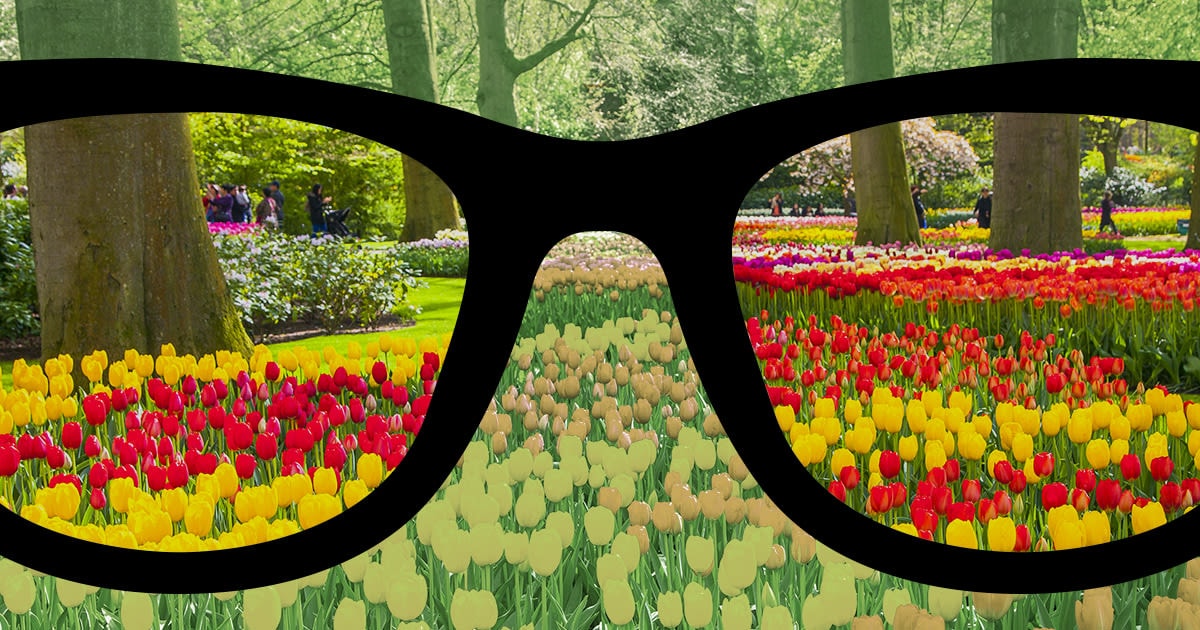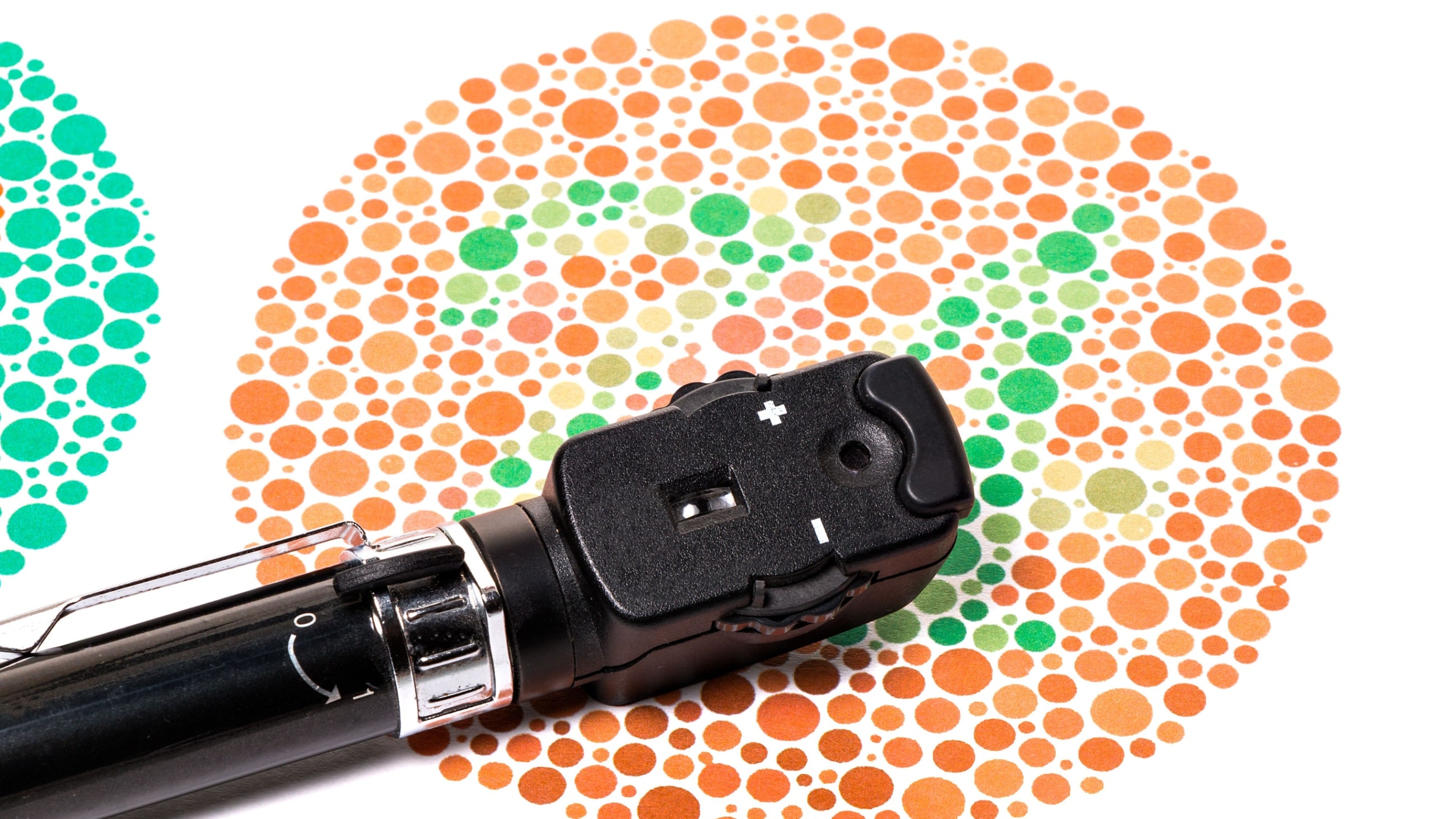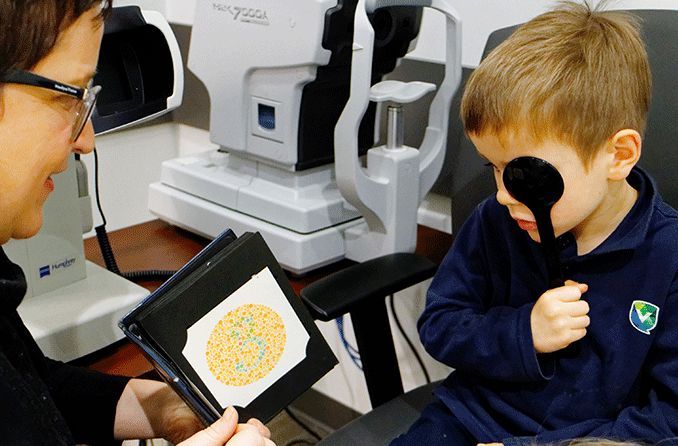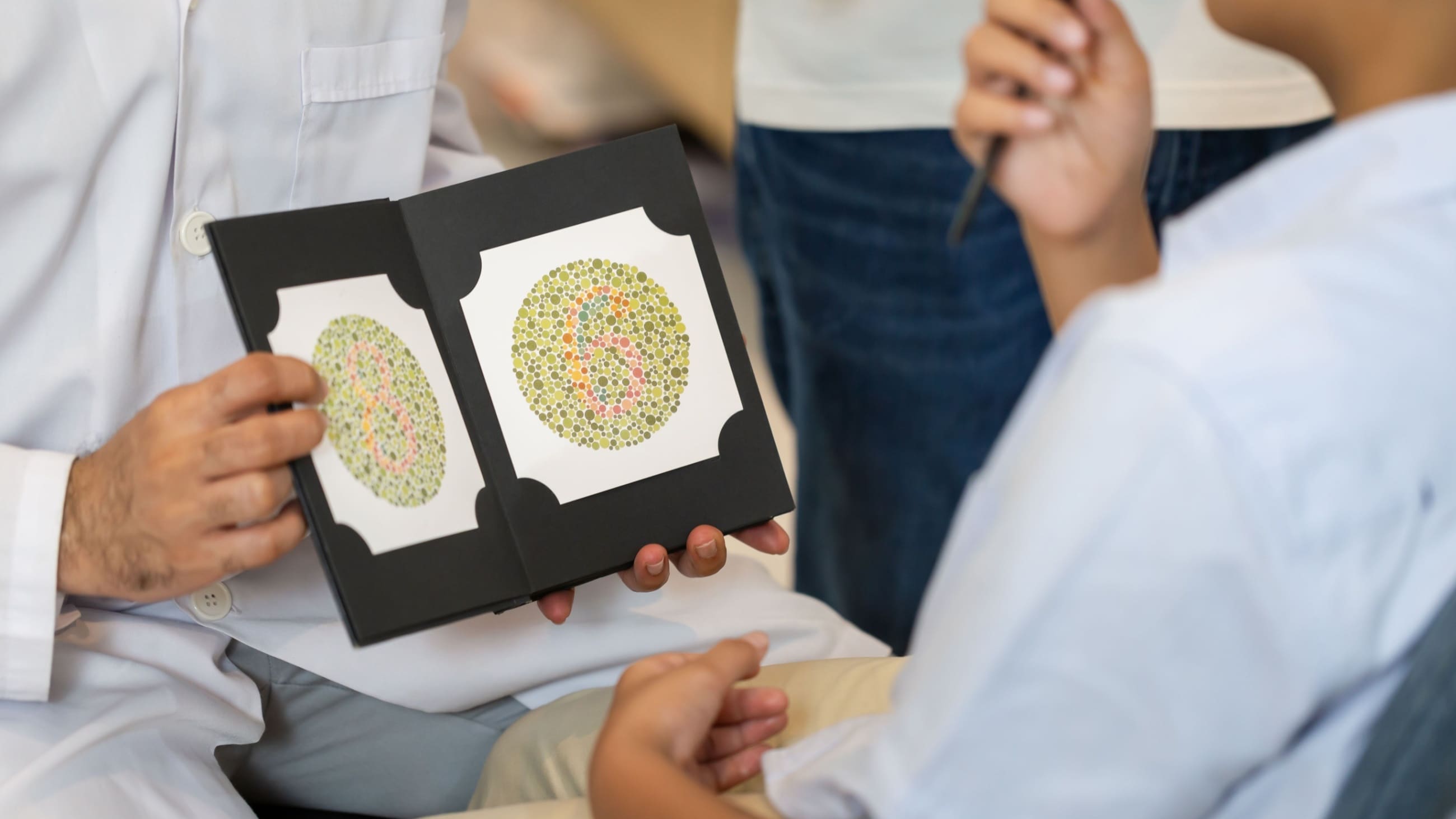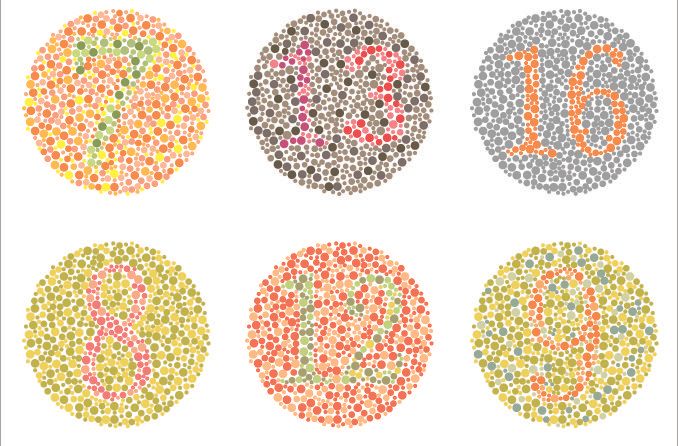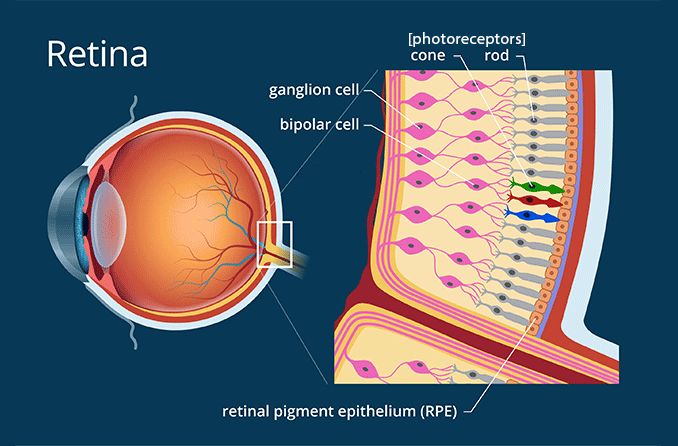What are colorblind glasses?
Colorblind glasses use tinted lenses to help some people with color blindness see colors better. They're usually made for people with certain forms of red-green color blindness (the most common type).
Unfortunately, there's no cure for color blindness right now. These special glasses can't give a colorblind person normal color vision, but they could help some colors look more vibrant or noticeable.
How colorblind glasses work
There are photoreceptor cells along the back of your eye (retina) called rods and cones. The cone cells react to colored light from the outside world and help people see in color.
An eye with normal color vision has three kinds of cones. One type detects red colors, one detects green and one blue.
Color blindness happens when:
Some (or all) of the cones are there, but they don't work very well.
Some (or all) of the cones are missing.
The medical term for color blindness is color vision deficiency. Most people who have the condition are born with it, but some diseases and medications can cause it too.
Almost all colorblind people can still see some colors. Total color blindness is very rare.
Red-green color deficiency is by far the most common type of color blindness.
There are four different kinds ofred-green deficiency. They are:
Deuteranomaly – Some greens look more red. Most people with red-green color vision deficiency have this type.
Protanomaly – Some reds look more green and faded.
Protanopia – It's hard to tell the difference between green and red due to missing red cones.
Deuteranopia – It's hard to tell the difference between green and red due to missing green cones.
There's a good chance you or someone you know is at least a little color blind. About 1 in 12 males and 1 in 200 females are born red-green color blind.
There are other types of color blindness too, but they're rare. They include:
Blue-yellow color deficiency – There are two different types. Tritanomaly makes blue and green look similar, as well as yellow and red. Tritanopia makes blue look similar to green, purple similar to red and yellow similar to pink.
Blue cone monochromacy – Only the blue cone cells work, but most colors look grayish. This is the rarest type.
Achromatopsia – None of the cones work well or at all. It can make all colors look much less vibrant (incomplete achromatopsia) or remove all colors completely (complete achromatopsia).
Colorblind glasses work by blocking certain colors so you can see other colors better. This can help people tell certain colors apart or even see a new color.
For example, someone with deuteranomaly has weaker green cones. Shades of green look more like red.
This happens because red and green overlap on the visual spectrum. That's where this person's stronger red cones "win" because they send better signals to the brain.
They would choose glasses that let through more green and less red, specifically targeting that overlapping part of the spectrum. That way, green and red won't have to compete as much, and the brain receives a clearer signal.
These glasses usually work best for people with mild color blindness. And they can only help colorblind people who have all three types of cone cells.
They won't help people who are missing one or more of the cones altogether because there aren't any color signals to "strengthen."
Do colorblind glasses work?
Colorblind glasses can work for some people with red-green color blindness, but they won't help everyone . Researchers have noticed positive effects in some studies but not in others.
Some people say red-green colorblind glasses help certain colors stand out more. The higher contrast makes it easier for them to tell "problem objects" apart from other objects nearby.
The best way to find out is to try a pair and see how they affect your eyesight.
You have to wear colorblind glasses to see any effects. They aren't proven to have long-term benefits, so your eyesight will go back to its regular state when you take the glasses off.
Remember that tinted colorblind lenses block some light from getting to your eyes. That can make it harder to see at night or in low light.
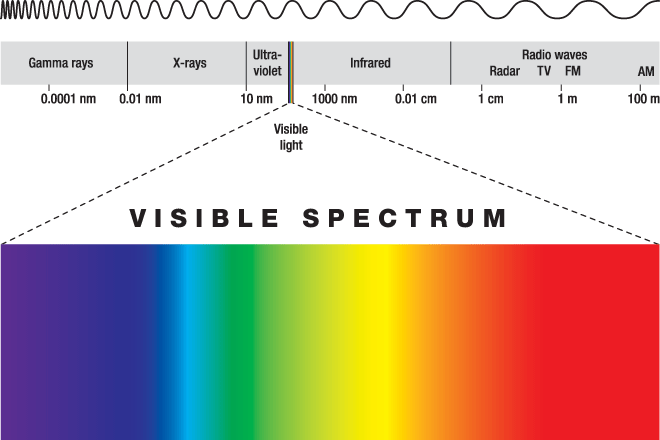
Humans can see up to 10 million colors, but those make up a very small slice of the electromagnetic spectrum.
SEE RELATED: Do colorblind contacts work?
Do you need a prescription?
No, you don't need a prescription to buy standard colorblind glasses.
You'll only need a prescription if you want custom lenses that correct refractive errors. This can be important to people who are nearsighted, farsighted or have astigmatism.
If you don't have a prescription or haven't updated it in a while, you'll need to get a new prescription from an eye doctor.
SEE RELATED: How to read your eye prescription
Popular brands of colorblind glasses
Many companies make glasses for people who are color blind.
Some companies use a different lens technology than others. You might find that glasses from one company work better than another company's glasses.
Some of the most popular brands are:
EnChroma
EnChroma glasses are some of the most well-known corrective lenses for color blindness. The company makes indoor, outdoor and safety glasses for adults and kids. Prescription lenses are available for an extra cost.
Pilestone
Pilestone is another popular brand. They sell several different styles for adults and children. You can add prescription lenses for an extra fee.
VINO Optics
VINO Optics makes red-green colorblind glasses and other special glasses in adult sizes. You can include prescription lenses for an additional cost.
ColorCorrection System
The ColorCorrection System uses custom lenses for someone's specific color vision deficiency.
ColorCorrection customers need to schedule an in-person appointment before their glasses are made. According to the company's website, most people visit the main office in Baltimore, Maryland.
How much are colorblind glasses?
Most colorblind glasses cost between $100 and $450 without prescription lenses. Some are available for less than $100.
Some manufacturers make custom lenses for your specific color vision deficiency. This includes the ColorCorrection System. These glasses can cost several thousand dollars, but prices, fees and other costs vary.
As of 2023, the retail price of colorblind glasses with non-prescription lenses starts at:
EnChroma: $229
Pilestone: $109
VINO Optics: $304
ColorCorrection System prices aren't publicly available.
Most health and vision insurance policies don't cover the cost of colorblind glasses, so you'll probably have to pay out of pocket.
If you have an FSA (flexible spending account) or HSA (health savings account), you might be able to save money by using pre-tax dollars to pay for your glasses. Make sure to check the details of your account beforehand.
Most colorblind glasses aren't cheap. But if they help you see better, you might decide they're worth the cost.
READ MORE: Do all color blind people fail the Ishihara test?

